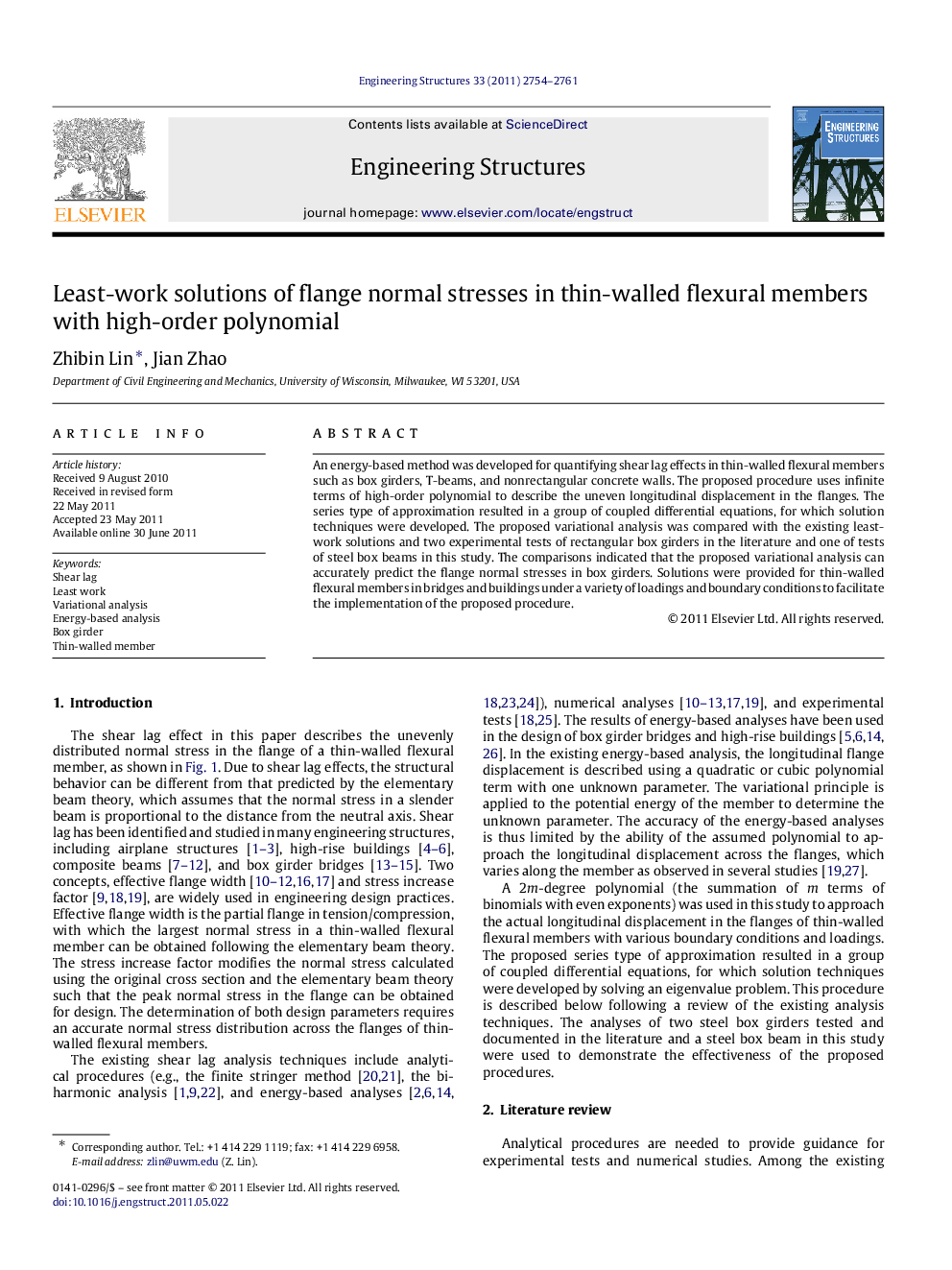| Article ID | Journal | Published Year | Pages | File Type |
|---|---|---|---|---|
| 267654 | Engineering Structures | 2011 | 8 Pages |
An energy-based method was developed for quantifying shear lag effects in thin-walled flexural members such as box girders, T-beams, and nonrectangular concrete walls. The proposed procedure uses infinite terms of high-order polynomial to describe the uneven longitudinal displacement in the flanges. The series type of approximation resulted in a group of coupled differential equations, for which solution techniques were developed. The proposed variational analysis was compared with the existing least-work solutions and two experimental tests of rectangular box girders in the literature and one of tests of steel box beams in this study. The comparisons indicated that the proposed variational analysis can accurately predict the flange normal stresses in box girders. Solutions were provided for thin-walled flexural members in bridges and buildings under a variety of loadings and boundary conditions to facilitate the implementation of the proposed procedure.
► High-order polynomial for the uneven longitudinal displacement due to shear lag. ► The analytical solutions can be predicted for flanged members. ► The comparison indicated the proposed method can greatly improve the prediction.
